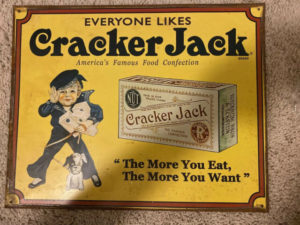What should I eat?
A healthy diet consists of real food, as opposed to processed food.
It should be no surprise that processed food is associated with chronic diseases, including obesity, metabolic syndrome, depression, cardiovascular disease, cancer, and all-cause mortality.
Classification of processed food
The NOVA framework classifies food and beverage products into four groups based on the industrial processing used in their production.
- ‘unprocessed or minimally processed foods’ (e.g., fresh fruits and vegetables)
- ‘processed culinary ingredients’ (e.g., salt, sugar, and honey)
- ‘processed foods’ (e.g., canned vegetables, cheese, and salted nuts)
- ‘ultra-processed food and drink products’ (e.g., carbonated drinks, breakfast cereals, cakes, and pastries)
High levels of processing are associated with nutritionally-poor products.
We have a processed food problem
Of 230,156 packaged food and beverage products examined in one study, 71% of the products were classified as ‘ultra-processed’. Of the products produced by the top 25 manufacturers (by sales volume) of packaged foods, 86% of the items were classified as ‘ultra-processed’.
The majority of items sold as food is essentially part of an elaborate chemistry experiment, with well-engineered mixtures of ingredients to optimize taste, minimize cost, and prolong shelf life.
Processed foods drive over-consumption
Processed food is engineered to drive over-consumption, and it indeed does so, as demonstrated in a randomized controlled trial.
Food scientists put significant effort into finding the perfect combinations of flavor and texture to create products that are irresistible. In fact, Big Food manufacturers even boldly announce exactly what they’re doing with their marketing strategies to hook the consumer:
Once you pop, you can’t stop

Betcha can’t eat just one

The more you eat, the more you want
Simple rule: Eat real food
A relatively safe rule-of-thumb for proper nutrition is to eat the way your grandparents did when they were young. For several years, I have been discussing this topic with my nonagenarians (ages 90-99) and even some centenarians (100+) whom I encounter in the hospital. Universally, they report that their families produced the majority of the food that they consumed — produce grown on their property, animals raised for meat, animals providing eggs/dairy, etc. Alternatively, they may have acquired food from their neighbors or a local farm or farmers market.
This is real food. Modern food consumption has come a long way from the hunter-gatherer model.

Unfortunately, we are getting further away from the connection we once had to the natural world for acquiring valuable nourishment. This detachment from how our food is sourced is quite evident with the evolution of grocery shopping since the first Piggly Wiggly in 1916.
Grocery stores were considerably smaller than the modern supermarket and were a source for a limited number of staples and specialty items. While processed foods were certainly being introduced in this era, they were the exception rather than the norm, and there remained a predominance of real food.
Real food comes from plants and animals.
Just like your ancestors were hunters and gatherers, a diet consisting of whole plant foods and whole animal foods is ideal. Products coming from a production facility should not be considered ‘food’.
Real food comes straight from the earth and is recognizable as food.
Foods should be as close to their natural state as possible. There should be only minimal processing, such as cutting, mixing, fermenting, etc. Highly processed food, on the other hand, is often manufactured in countless shapes, textures, colors, and flavors.
Real food IS Ingredients; it does not HAVE ingredients.
Real food doesn’t need nutrition labels, as its composition is self-evident.
Processed foods, however, can contain any of 5,000 different additives, and it’s not necessarily being disclosed. Melanie Warner, author of Pandora’s Lunchbox: How Processed Food Took Over the American Meal, says:
“The FDA doesn’t actually know how many additives are going into our food. This is in part because regulations are not only self-regulatory — so the food industry is doing the testing — but it’s also voluntary. The ingredient companies don’t actually have to tell the FDA about a new ingredient. If they choose to, they can simply just launch it into the market. The FDA doesn’t know about them, and nobody else really knows about them.”
Real food spoils.
In processed foods, even the use of real ingredients such as fruits and vegetables causes problems because of their water content which can cause spoilage or allow ice crystals to form when frozen. Ultra-processed foods are engineered with salt, sugar, and seed oils to maximize shelf life and, subsequently, profits.
Look at the difference between bakery products (made with fresh ingredients) and packaged products (made with highly processed ingredients) below.

Summary
For healthy nutrition, go back to the basics – plants and animals, grown and raised locally. Highly processed foods are not substitutes for simple, real, whole foods.
Eat real food.








